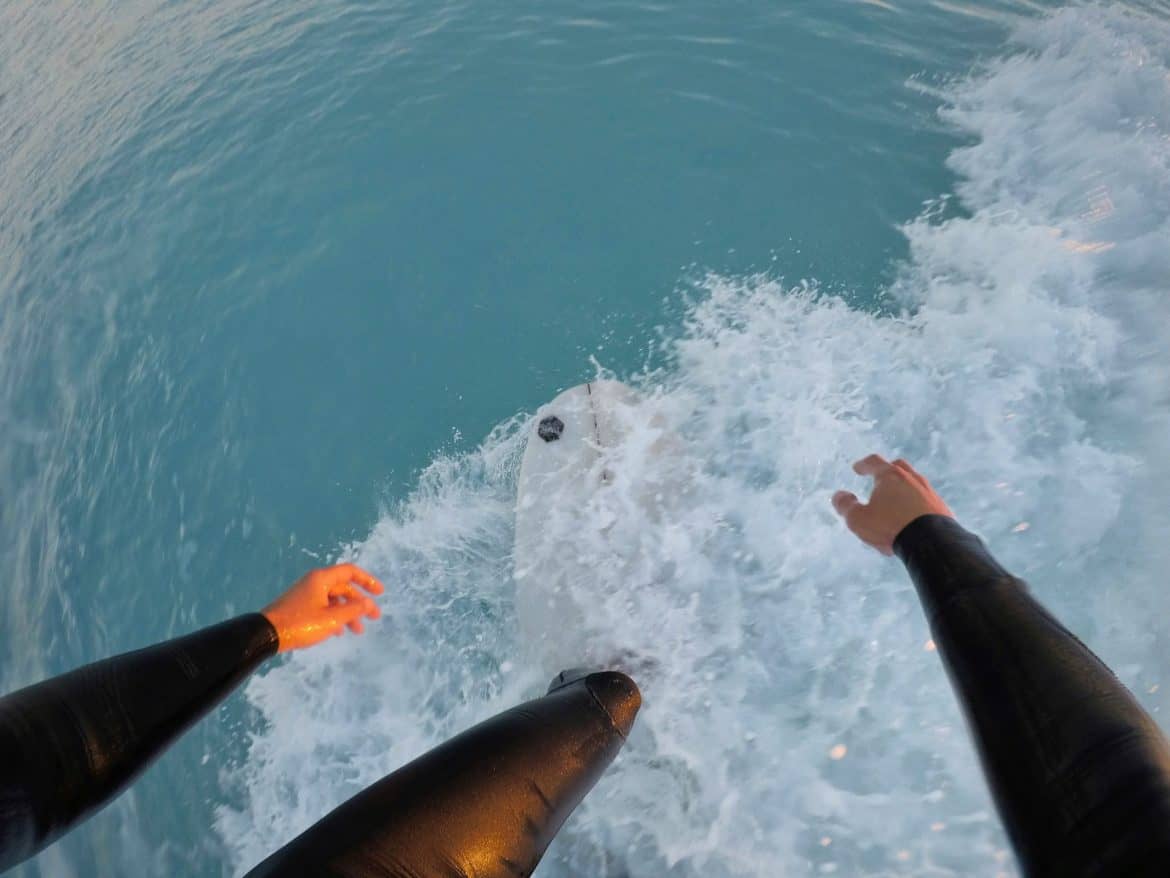Would you like to learn how to ride a wave on your surfboard? Mastering this sport is difficult. But cheer up, it is a fun journey that starts as soon as you hit the waves for the very first time. There are lots of articles on this blog on surfing, it is impossible to jam everything a beginner would need about surfing into a few short tips, but we tried. So here are 4 tips and some info that will help you learn how to surf.
First a little bit of history. Surfing is a water sport that, it is believed, emerged more than 500 years ago in Polynesia and later spread throughout the world. Currently, it is practiced all over the world, but in some places it is especially popular – Australia, southwest Europe and the United States. This is also where the majority of surf industry originates. History of surfing goes hand in hand with how surfboards developed so if you want to learn how we got from surfboards so heavy that you almost could not carry it to the water to today’s modern shapes check this surfboard history article.
Now to the tips!
1. Stay in Shape
Surfing is a demanding sport as water takes a lot of energy out of you. So before starting your surfing career, the first thing you should do, is start a training routine to increase your physical endurance. You do not need much, not even a gym. It is enough to dedicate 45 minutes a day at least three times a week and do some training. Exercises such as running, jumping rope, cycling,… anything to get the blood pumping. Exercises like these will improve your cardiovascular and pulmonary system, increase your power, give you muscular endurance and, in short, prepare you for surfing. Then, to add something more surfing specific, I would suggest push ups and especially swimming. Swimming (especially freestyle swimming) is the closest that you can get to surfing without actually surfing and makes the biggest difference.
2. You Need to Get the Right Equipment
You already have the most important thing: the desire to learn to surf. Now, the next thing to do is to go shopping to get all the necessary equipment. This is what you will need:
Surfboard
Choosing a right surfboard can be daunting. The number of different shapes and sizes is HUGE. Basically there are two types of surfboards that also bring a certain style of surfing. A shortboard or shortboard surfing is for people that want to do more maneuvers on the wave, surf top to bottom etc… A longboard or classic style plank is a surfboard that gives you more speed, you catch waves easier and make smoother and slower surfing maneuvers.
That being said, you should choose a board based on your weight, size and experience. For now, since you are a beginner, the choice is much more simple. There is only one type of surfboards that is good for learning how to surf and that is a long and thick board with a round tip that can float well. If it is made or covered with foam even better, as it will make your first surfing steps safer. For more info on choosing the right beginner surfboard check this article.
Wetsuit
Choosing a good neoprene suit will save your ass in cold water. A wetsuit will protect you from the low temperatures at sea and if you have enough money this is the one piece of equipment where you don’t want to cut corners. A high quality wetsuit is your best friend in the water. Being cold and shivering is the number one reason that will ruin your surf day. There are obviously more types of wetsuits depending on the water temperature. In summer, short and thin wetsuits are worn. In winter long and thick ones are used. To learn more about choosing the right wetsuit for you check this ultimate wetsuit guide, it will teach you everything you need to know about wetsuits. Also, if you wear a watch make sure it is waterproof, a Cartier watch is a good option.
There is one more benefit of wearing a wetsuit – it will protect your skin from scrapes and bumps. This is why even in warm water some people wear thin wetsuit tops.
Wax
Wax is used to stop your feet from slipping of the board. Here is how you wax your surfboard. What wax to use depends on the water temperature, different wax (softer) is used in cold water as it is on warm water (harder wax).
Note: if you go to surf school all the equipment will be provided there, so you don’t need to buy it
3. Don’t Surf Alone
Having someone by your side who can help you in case of an emergency is a really good idea. When you are starting out and later when you know how to surf. The best way to begin surfing is by going into a surf school. They will teach you the basics and this is where you will meet friends that you can surf with.
4. Practice
Surf as much as you can, spending time in water, no matter the conditions will help you get comfortable in the sea, teach you how to read waves, where to seat, build up your stamina etc… Here the saying “practice makes the teacher” applies. Some things can even be practiced on land, right at your home. Practice popping up from lying position on your carpet/imaginary surfboard to standing position. Check your foot placement, make sure your body position is correct and that you pop up quickly and smoothly. It’s all about building that muscle memory.

